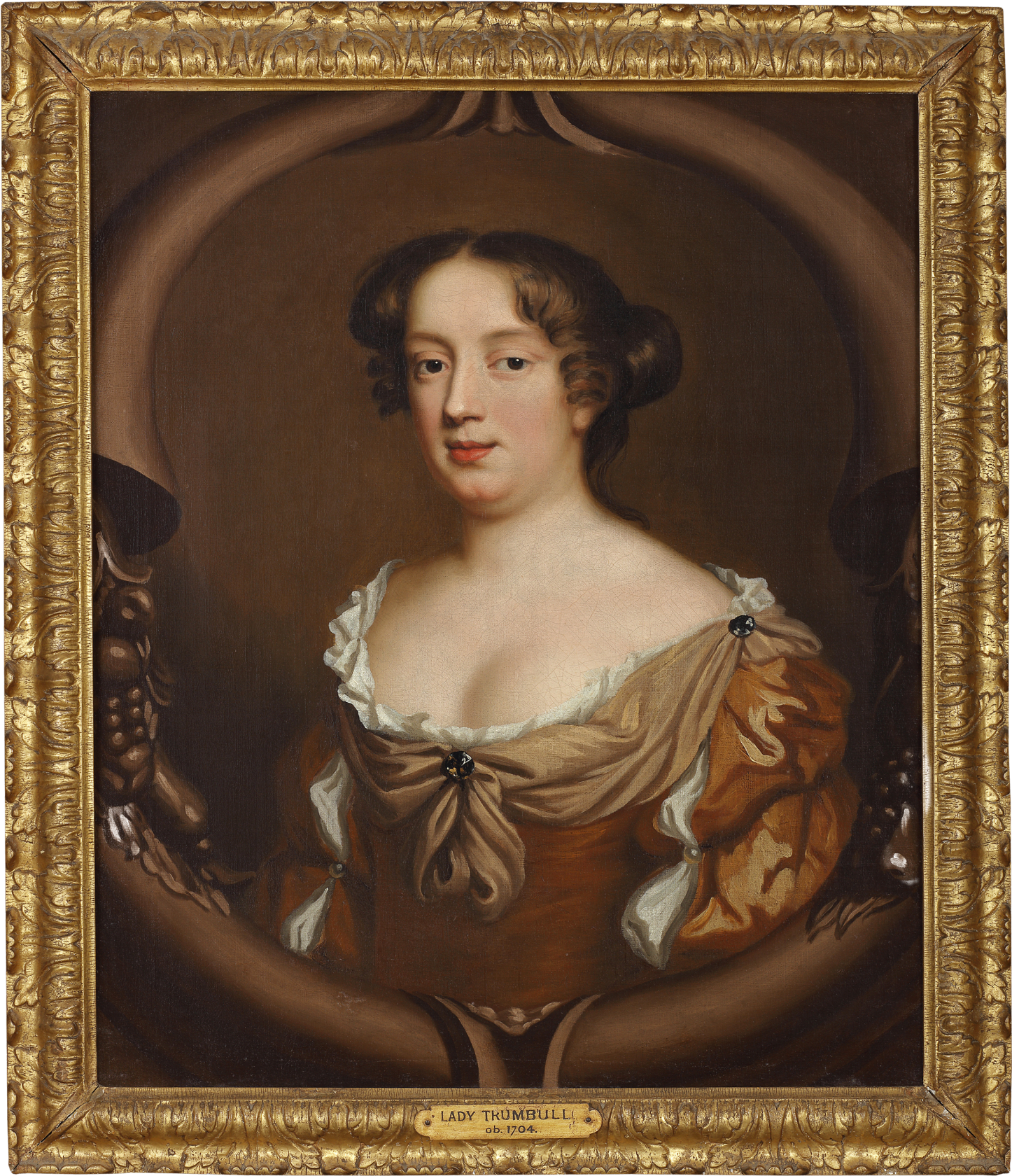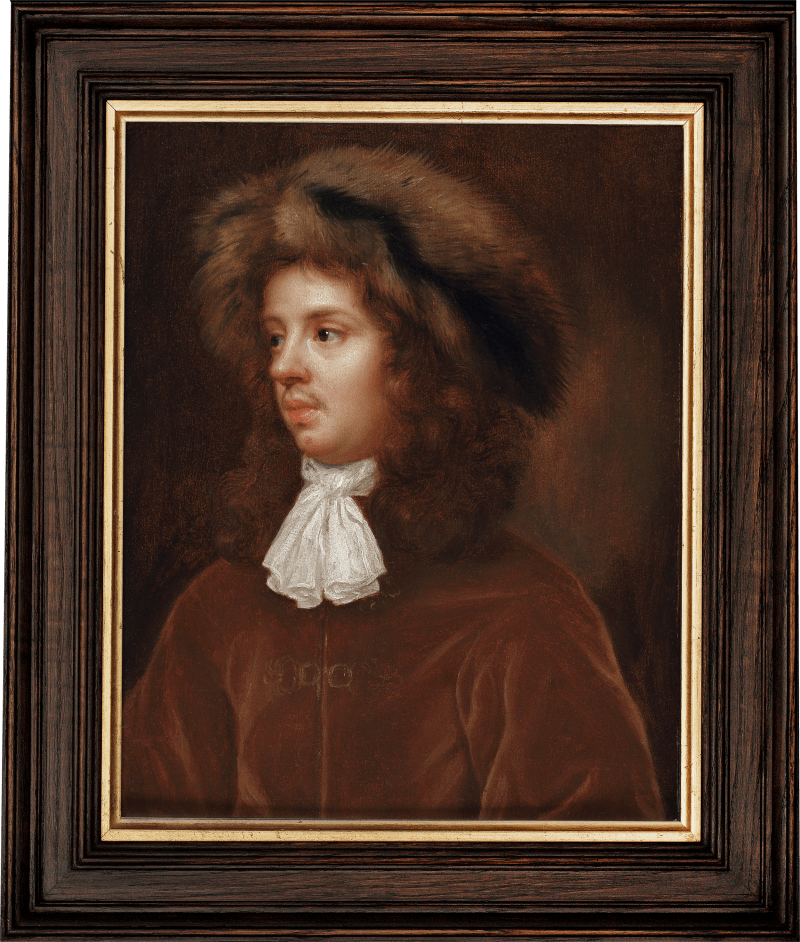The Trumbull and Beale families not only shared a friendship but were also connected through marriage. In 1665 William Trumbull’s aunt, Elizabeth, married John Bridges of Barton Seagrave (1642–1712), a nephew of Charles Beale.[1] When the Beales lived at Hind Court, Charles worked closely with Trumbull’s father, William Trumbull (1603–1678). As Chancery officials, they both contributed to the complex process of examining and approving letters patent. While one prepared and engrossed the letters, the other signed warrants from the Signet office.[2] Later, when the plague made London dangerous, Trumbull’s father played a key role in the Beales’ decision to move to Hampshire by identifying Allbrook Farmhouse as a suitable property and then facilitating the purchase.[3]
William Trumbull established a successful career as a civil lawyer, and in 1670 married Elizabeth Cotterell, the daughter of the influential courtier Sir Charles Cotterell (1615–1701). That year, through the offices of his father-in-law, William was appointed chancellor of the Diocese of Rochester, a...
The Trumbull and Beale families not only shared a friendship but were also connected through marriage. In 1665 William Trumbull’s aunt, Elizabeth, married John Bridges of Barton Seagrave (1642–1712), a nephew of Charles Beale.[1] When the Beales lived at Hind Court, Charles worked closely with Trumbull’s father, William Trumbull (1603–1678). As Chancery officials, they both contributed to the complex process of examining and approving letters patent. While one prepared and engrossed the letters, the other signed warrants from the Signet office.[2] Later, when the plague made London dangerous, Trumbull’s father played a key role in the Beales’ decision to move to Hampshire by identifying Allbrook Farmhouse as a suitable property and then facilitating the purchase.[3]
William Trumbull established a successful career as a civil lawyer, and in 1670 married Elizabeth Cotterell, the daughter of the influential courtier Sir Charles Cotterell (1615–1701). That year, through the offices of his father-in-law, William was appointed chancellor of the Diocese of Rochester, a prestigious position within the Church of England’s ecclesiastical court system. His new role entailed oversight of the legal affairs of the diocese, including the management of church law, marriage licences and property disputes, and positioned him as a key advisor to the bishop. Later, he served as ambassador to France and Turkey, and became secretary of state to King William III.
William is also recognised for his support of two great literary figures. John Dryden records in the postscript to his translation of Virgil that ‘if the last Aeneid shine amongst its fellows, it is owing to the commands of Sir William Trumbull, who recommended it as his favourite to my care’.[4] He was also an early patron of Alexander Pope, who wrote an epitaph to Trumbull that highlighted his virtues and character, with the opening lines: ‘A pleasing form; a firm, yet cautious mind; Sincere, tho’ prudent; constant, yet resigned.’[5]
Born in The Hague at the court of Elizabeth of Bohemia, Elizabeth was a cultivated woman, brought up among poets and politicians. She returned to England as a small child, when her father was appointed adviser to the Duke of Gloucester and eventually became master of ceremonies to the court of King Charles II. In 1662, Cotterell was granted some land in St Martin-in-the-Fields, the Old Spring Garden at Charing Cross. It may have been in these surroundings that the couple met.[6]
The extant thirty-year correspondence between William and Elizabeth testifies to their mutual love, encouragement and respect. Elizabeth addressed her husband as ‘My Dearest Heart’ (Charles Beale used the same words with Mary) and sometimes wrote more passionately: ‘I hourly wish my selfe with thee and am sorry I cannot before.’[7] The Trumbulls and Beales shared similarly pious principles of earnestness and industriousness. William was considered ‘a learned, a virtuous, and a diligent man’.[8] The commission of these portraits gave the artist an opportunity to illustrate the ‘latitudinarian’ principles on spiritual and marital bond that she had so deftly explained in her Discourse on Friendship.
The present works are recorded in Charles Beale’s notebook from 1677 in which he lists payments made to Bartholomew and Charles the Younger for assisting with the finishing of portraits. Under the list of payments to Charles is written ‘Pd him for Mr Trumbull’s 2 ovals. £00.05.00’.[9] A payment of five shillings for two oval borders was significantly less than the £1.00 Charles received for his work on the portrait of Anne Sotheby but appears to have been his standard fee for this type of work.[10]
[1] John Bridges was the son of Col. John Bridges of Alcester and Margaret Beale, Charles’ sister.
[2] The National Archives, Docket Books of Warrants for the Great Seal, C 233/7.
[3] Between August and December 1664 Trumbull acquired the lease of Allbrook from Mr Hurd of Stoke and passed it to the Beales under their cousin Smith’s and Mr Slaughter’s names, and with Woodforde as a witness. See Samuel Woodforde’s Liber Dolorosus, Bodleian Library, MS. Eng. Misc. 381.
[4] Frost and Dearing 1987, p.809.
[5] Elwin and Courthope 1882, p.382.
[6] The National Archives, Patent Rolls, C 66/2964, no.15.
[7] British Library, Trumbull Papers, Add. MS. 72510, fols. 22v and 27v.
[8] Henning 1983.
[9] Heinz Archive, Richard Jeffree Papers, 7/12.
[10] A payment of £00.02.06 for ‘Mr Marsham’s oval’ is recorded in the same list, as is a record of a payment made to Charles for his assistance with a half-length portrait of Trumbull; however, the whereabouts of this work are at present unknown.











